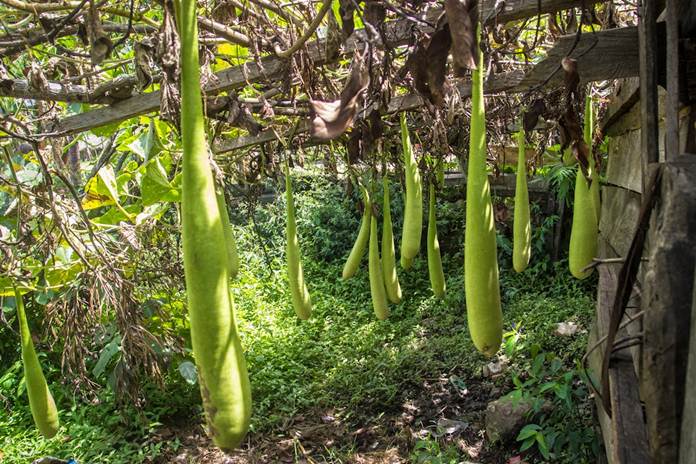PAPUAAROUND — Water gourd is not only used as a koteka, a traditional garment that functions as a cover for the male genitalia, but can also be used as a medicine for typhus. How do you do that?
Koteka is the traditional clothing of the Dani tribe in the Baliem Valley, Papua. This koteka comes from a type of water gourd (Lagenaria siceraria) whose contents and seeds are removed and then the skin is dried (sun-dried).
Based on a folklore believed by the Dani tribe in the Baliem Valley, originally the seeds of the water gourd made from koteka were brought by a dog. These water gourd seeds are found in the folds of a dog’s ears, then the seeds are taken and planted. The result is a water pumpkin plant or koteka pumpkin.
Koteka pumpkins are planted in the yard of the Dani house in Parema Village, Wesaput District, Jayawijaya Regency. How to plant this pumpkin is almost the same as other vines.
You do this by making room for the vines so that the pumpkin can hang. The old koteka fruit is used as koteka because the texture of the old gourd is harder than the young one, so it lasts longer.
In addition to making koteka, the Dani people in Parema Village use young pumpkin as a traditional medicine to prevent typhus. You do this by boiling it.
This boiled pumpkin is eaten every day until the typhus is cured. Usually small children to old people who suffer from typhus consume this boiled pumpkin.
Apart from that, the Dani people in Kampung Parema also cultivate red fruit, a type of red pandanus fruit which is eaten daily with boiled taro. Red fruit is also believed to cure disease.
Related News : Get to Know Koteka, Papua Traditional Clothing

